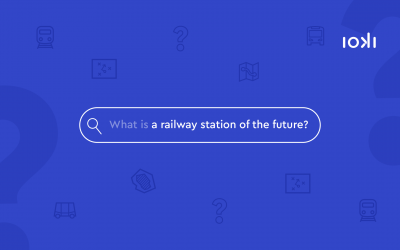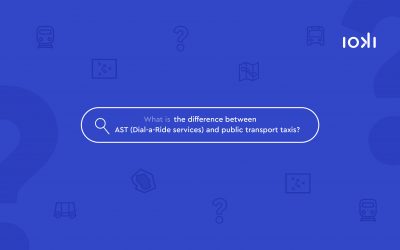The times of the lockdowns have clearly shown that travelling is a basic need for many people that they do not want to live without. This need is also confirmed by the current ADAC (in German: Allgemeiner Deutscher Automobil-Club e. V.)* Tourism Study from March 2023. But lockdowns, contact bans and travel restrictions could only briefly curb the Germans’ desire to travel; instead, the German hotel and restaurant industry could benefit from the pandemic in the long term: 32 percent of those surveyed have learned to appreciate Germany as a holiday destination and plan to holiday more often in their own country in the future.
Mobility as a major lever for climate-friendly tourism
Travelling in Germany also means that many tourists travel to their destination by car. Although air travel is being used less and rail travel is gaining in popularity, every second person chooses the car as their preferred means of transport. No wonder that tourist traffic is responsible for three quarters of the CO2 emissions induced by tourism. However, the current monitoring report of the Research Association for Holiday and Travel (in German: Forschungsgemeinschaft Urlaub und Reisen e. V. [FUR])** records a peak in the desire for environmentally and socially compatible travel. Desire and reality clearly diverge. But what is stopping us from leaving the car behind and going on holiday in a more climate-friendly way?
“All holiday regions in Germany can be reached in an environmentally friendly way by train. Either directly by long-distance transport or by changing to local transport. However, guests often only decide to travel by train if they have the feeling that they can expect good mobility via local public transport on site,” summarises Kathrin Bürglen, director of Fahrtziel Natur, a cooperation of the three large environmental associations BUND, NABU, VCD and Deutsche Bahn. All partners are continuously working to expand the travel chain with environmentally friendly means of transport for guests in high quality, so that holidaymakers can explore nature with public transport instead of their own cars. This is particularly easy when the guest card can be used as a public transport ticket. 17 of the 24 Fahrtziel Natur regions already offer this service to their guests.
“A well-timed bus and regional train service should form the basis. Complementary offers can help to ensure that all excursions in the holiday region are easy to realise. For example, this could be on-demand transport or rental bicycles. If, in addition, apps combine information on excursion destinations with public transport data, holidays by train and bus will become very easy.”
– Kathrin Bürglen, Director Fahrtziel Natur
Tourism organisations, municipalities and the transport companies involved face the challenge of more sustainable local tourism mobility because public transport is in many cases exclusively geared towards schoolchildren or commuters. In addition, county borders in contiguous tourism regions and a lack of funding make uncomplicated, comfortable and flexible holiday mobility and travel chains difficult.
Environmentally and climate-friendly mobility at the holiday destination
But there are also many positive examples of how environmentally and climate-friendly mobility and tourism can be implemented together so that holidaymakers and the local population benefit equally.
One very successful example is EMMI-MOBIL in Bad Hindelang, Bavaria. In the Allgäu High Alps, the protection of the unique natural and cultural landscape is an essential aspect of the local identity. The on-demand transport in the community complements the existing public transport services in the region and takes travellers without a fixed timetable or route to the next bus connection or even directly to their destination. Whether free of charge with the guest card “Allgäu Walser Card” or with a discounted public transport ticket. The offer is part of the tourism strategy of the market town and the sustainable living space concept “Unser Bad Hindelang 2030”. Not surprisingly, the project has received several awards, including 3rd place at the Deutscher Tourismuspreis in 2022.
Similarly embedded in the local identity is the on-demand transport Friedrich in Greifswald, which has been running since March 2023. Three vehicles, the so-called Kutschen, supplement the existing public transport service in the districts of Friedrichshagen, Wieck/Ladebow, Stadtrandsiedlung, Groß Schönwalde and, for a limited period, in the Ostseeviertel Parkseite. The entire city area is being serviced in the evenings. The minibuses, which can take wheelchairs and bicycles, provide better connections to the outskirts of the city and take passengers to important sights – a real alternative for visitors and locals alike.
In contrast, the Bus alpin service in Switzerland is a temporary tourist mobility service. The seasonal services offered by the Bus alpin association and various national operators connect popular excursion destinations to public transport that were previously only accessible by private car. This strengthens the tourist attractiveness and nature-based tourism in the member regions. The goal is to achieve a transfer effect from the car to public transport. People seem to like it: During the 2023 summer season journeys can be booked in additional Swiss regions.
On-demand transport services can be complementary offers to create a closed tourist travel chain. But demand-responsive transport services can also ensure flexible and comfortable mobility at the destination. Therefore, they not only complement the first mile from the doorstep to the long-distance railway station and the last mile from the destination railway station to the hotel, but also create better mobility in the holiday destination itself.
On-demand transport: attractive for travellers and operators
Flexible mobility offers can successfully close the first and last mile at the holiday destination and optimise the local mobility offer to make public transport attractive for travellers and residents alike. Another advantage is that, like the Swiss transport offer, the services are seasonally adaptable and can be extended beyond everyday transport for the holiday season. This gives not only travellers but also local operators the necessary flexibility. Such mobility offers are the future of demand-driven tourist travel and fulfil the desire of many travellers to reach their destination in a more environmentally friendly and flexible way.
*ADAC Tourismusstudie: Reiseverhalten im Wandel (2023): https://www.adac.de/verkehr/standpunkte-studien/mobilitaets-trends/tourismusstudie-reisen-corona/
**Dirk Schmücker, Nadine Yarar, Ulf Sonntag und Wolfgang Günther: Nachhaltigkeit bei Urlaubsreisen: Bewusstseins- und Nachfrageentwicklung und ihre Einflussfaktoren (2023) http://reiseanalyse.de/wp-content/uploads/2023/01/UBA_Nachhaltigkeit_bei_Urlaubsreisen_Bericht2022-1.pdf



